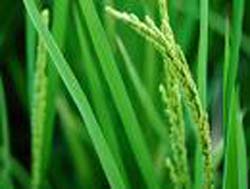
CAS botanists have made novel progress on studies of origin and domestication of the Asian cultivated rice
Oryza sativa. Their work was published in the June issue of
Genetics.
Scientists have long debates over over the origins of the Oryza sativa from its wild ancestor
O. rufipogon, focusing on a monophyletic or polyphyletic origin.
To make clear the origins and demographic history of rice domestication, a research team led by Prof. GAO Lizhi from the CAS Kunming Institute of Botany, teaming up with Dr. Hideki Innan from University of Texas, examined microsatellite genotypes of 92 individual plants from the two
O. sativa subspecies and
O. rufipogon. They found that the japonica subspecies suffered a more severe bottleneck than did the indica subspecies. These results suggest that indica and japonica subspecies were not independently domesticated; the two subspecies seem to be at least partially derived from the same ancestral populations.
Their work indicates that the origin and domesticating mechanism of the Asian rice might be far more complicated than thought, according to researchers. Unlike the conventional understanding of domestication of plants modeled after maize, in which each crop has a species as its ancestry, the new work could promote the studies of mode plants in which in which several cultivated strains share one ancestry. The study is of importance in the further exploration of comparative studies of functional genomics and mining out more new genes noted for their valuable functions or outstanding characteristics in the wild.







